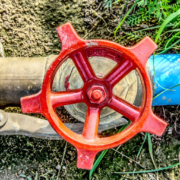Make a Map of Your Irrigation System
It’s easy (and fun) to produce a landscaping plan showing where every shrub and flower is placed on site. Drawing what you can see is relatively easy.
But what about the irrigation system underneath your landscaping? Do you know the location of your water mainline, irrigation system clocks, valves and sprinkler heads?
Understanding the layout of your irrigation system is important so you can accurately locate components for seamless repair. If you plan on adding to or upgrading the system, you’ll want an irrigation map to guide construction.
Steps to making your irrigation map
First, locate all of the sprinkler heads on your property and mark their location on a copy of your landscaping site plan. Also mark the location of the following elements:
• Water meter or irrigation sub meter, and where the water comes from the street onto your property (the main line)
• Irrigation controller
• Shut off valve for turning off the irrigation system
• Pressure regulator – this may be for the irrigation system separate from the house. If your irrigation comes from a pipe that first serves the house, it may be located before it enters the house.
• Irrigation valves
• Hose bibs
• Backflow preventer – if you don’t have one, your sprinkler valves probably do, so don’t worry
Observe and color code which sprinklers go on at the same time when a valve is turned on.
Adapting your existing irrigation system to a new efficient system
Use your irrigation map to determine which parts will work with a new, more efficient system without abandoning everything and starting from scratch. If you’re removing or renovating most of your landscaping, you might need to alter the irrigation. In that case, starting from scratch can end up being the most cost and time efficient alternative.
This article was inspired by the 71-page Sustainable Landscapes Program guidebook available at SustainableLandscapesSD.org. The Water Authority and its partners also offer other great resources for landscaping upgrades, including free WaterSmart classes at WaterSmartSD.org.



